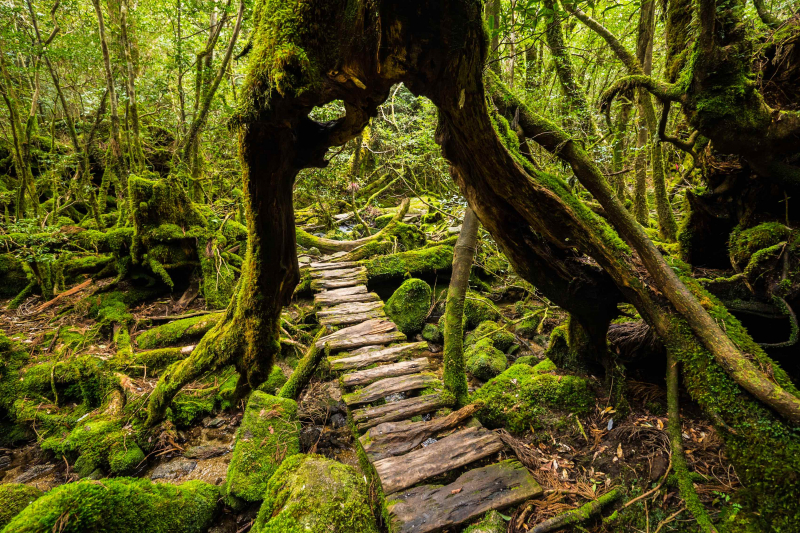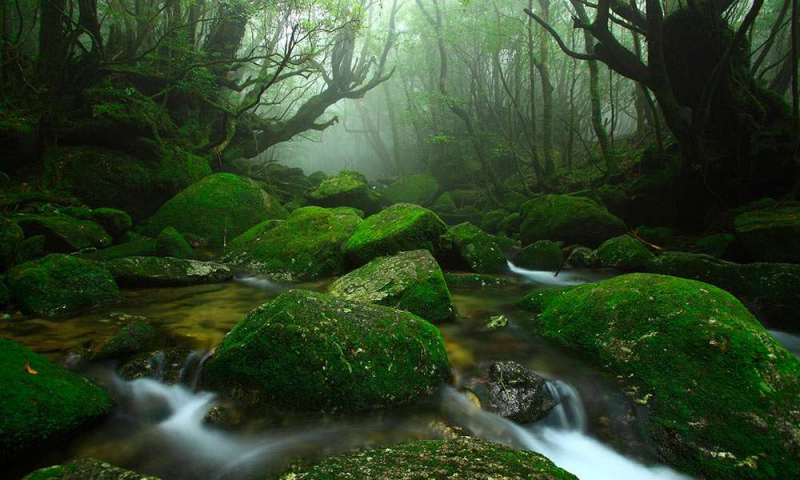Yakushima
Yakushima has Japan's most ancient forest, with trees up to 7,000 years old, and is thought to have inspired the Studio Ghibli film, Princess Mononoke. Despite extensive logging during the Edo period, the forest has since recovered and is now protected as a national park. Yakushima is a primeval temperate rainforest that extends from the center of the mountainous Yakushima Island. The island is located 60 kilometers off the southernmost tip of Kyushu Island in the southwestern end of the Japanese archipelago, at the interface of the Palearctic and oriental biotic regions. Mountains nearly 2,000 meters high dominate the island, and the property is located in the center of the island, with arms extending south, east, and west to the coast.
Yakusugi (a combination of the island's name and the Japanese word for cedar) trees over 1,000 years old can be found throughout the island. Because it is a subtropical island, there is a lot of rain and a lot of mist in the forest. Yakushima's temperate island ecosystem is unique in the Northern Hemisphere, with successive vertical plant distributions extending from coastal vegetation with subtropical elements, up through a montane temperate rainforest to a high moor and a cold-temperate bamboo grassland at the central peaks. The montane temperate rainforest of Yakushima is globally distinct, due to its peculiar ecosystem with abundant rheophytes and epiphytes that have adapted to the high rainfall, in excess of 8,000 mm annually, and resulting humid environment. Home to some 1,900 species and subspecies of flora, 16 mammal species, and 150 bird species, it exhibits rich biodiversity.
Location: Yakushima, Kumage District, Kagoshima 891-4408, Japan












